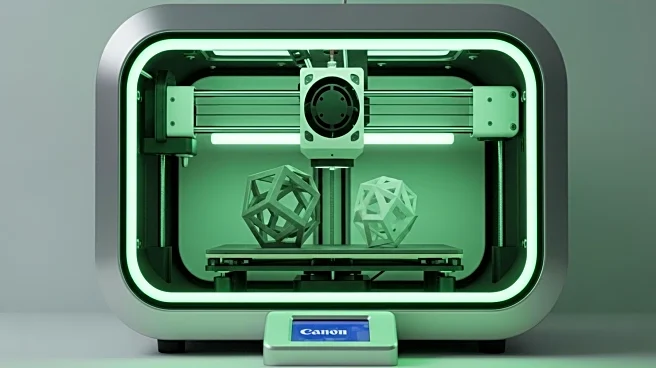Rapid Read • 8 min read
Matthew Richardson, a British track cyclist, has set a new world record in the UCI Men’s Elite 200m Flying Start, becoming the first cyclist to break the nine-second barrier. Richardson achieved this feat using a custom Hope HB.T track bike equipped with 3D-printed metal components from Renishaw, designed for maximum stiffness and aerodynamic efficiency. These components allowed Richardson to maintain peak power and aerodynamic form at high speeds. The record was set at the Konya Velodrome in Turkey, surpassing the previous record held by Harrie Lavreysen of the Netherlands. Renishaw's technology also supported other cyclists in their attempts to break world records, highlighting the role of advanced manufacturing in competitive cycling.
AD
The use of 3D printing technology in cycling represents a significant advancement in sports engineering, offering customized solutions that enhance performance. This development underscores the potential of additive manufacturing to revolutionize equipment design in competitive sports, providing athletes with tailored components that improve comfort, efficiency, and power transfer. The success of Richardson and other cyclists using this technology may encourage further investment and innovation in sports equipment manufacturing, potentially leading to new records and achievements in various sports disciplines.
The success of 3D printing in cycling could lead to broader adoption of this technology across other sports, as manufacturers and athletes seek to leverage its benefits for performance enhancement. Future developments may include more widespread use of customized equipment in professional sports, driven by the ability to create components with complex geometries and optimized weight-to-strength ratios. Additionally, ongoing collaboration between technology companies and sports teams may result in further breakthroughs in equipment design and performance.
The integration of 3D printing in sports equipment raises ethical and regulatory questions about fairness and accessibility. As technology advances, governing bodies may need to establish guidelines to ensure that all athletes have equal access to performance-enhancing equipment. Furthermore, the environmental impact of manufacturing processes, including 3D printing, may become a topic of discussion as the sports industry seeks sustainable solutions.
AD
More Stories You Might Enjoy











